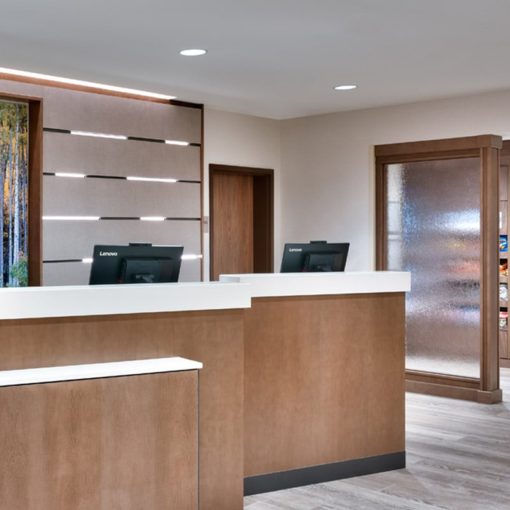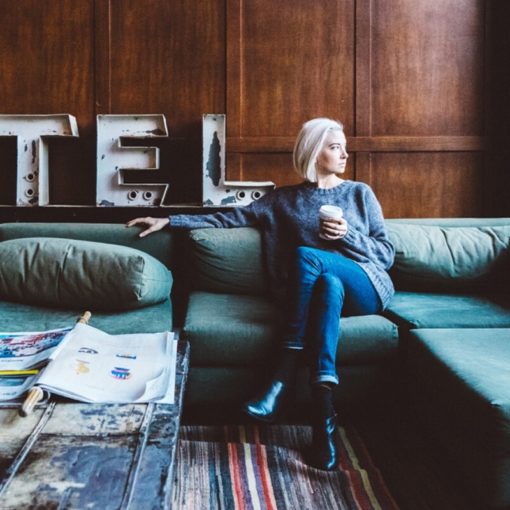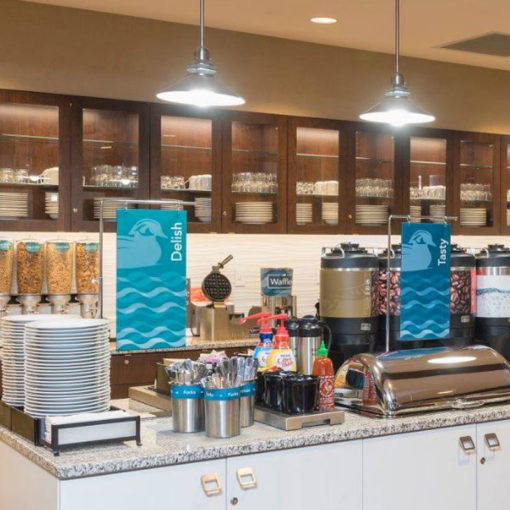Designer’s Spotlight on Hospitality Seating
Hospitality seating offers more than just a resting place for guests. It can also affect traffic flow and where a guest chooses to spend time. With the perfect balance of fixed and flexible seating in hotel public spaces, hotels can maximize capacity and usage while following market trends post-COVID.
In this post, you’ll learn the six latest trends in hospitality seating that our designers have their eye on.
Hospitality Seating Design Trends
1. Height Variance
Hotel brands are looking for a mix of lounge, dining height, accessible height, bar height, and counter height seating to add depth and variation to their design. Offering varied heights and styles of seating ensures maximum guest comfort with an array of choices to accommodate work, leisure, or a combination of the two.
2. Spacing
We are seeing grouped, lounge-like seating, pods, and “cocoon” style chairs that have noise-canceling capabilities achieved through a high-back design and fabric of typically felt or wool. Hoteliers are also providing flexible seating in outdoor environments that allow guests to work, dine, and lounge in these spaces just as they would in an indoor environment.
3. Multi-Functionality
Now, banquettes can take the place of a room full of dining tables, chairs, and communal tables. Guest usage these days demands USB outlets and integrated cable management in most upholstered seating, aside from perhaps dining chairs and bar stools. Quality dining seating fabrics are needed with stain resisting properties to withstand the test of time.

4. Durable Fabric
All fabrics specified in a hospitality environment must hold a high number of “double rubs,” a measure of a fabric’s durability. Most hotels undergo renovations required by brands every 6-7 years, meaning the fabric must endure wear and tear while still looking presentable for a minimum of that length of time.
5. Residential and Natural Feel
Hotel seating is crossing over into a residential feel, which involves modifying the pitch, foam, and slope of the arms and/or back. There is also a trend toward solid wood frames versus fully upholstered pieces, which introduces a natural element. Upholstery styles that are trending include tufting, channeling, quilting and shapes that are organic and rounded.

6. Ergonomics and Quality
Ergonomics and quality are also key factors when selecting hospitality seating. Now that people frequently bring their work with them on trips, it’s important that they have healthy posture during work sessions during their stay. The quality of the seating plays a critical role in ensuring a comfortable seat for guests over time.
You can trust Innvision to take brand requirements, location, guest demographics, lead times, budget, ergonomics, and timing needs into consideration when selecting your hospitality seating. We have longstanding relationships with commercial-grade vendors with a reputation for quality and customer service. Most of these vendors have been previously vetted by major hotel brands such as Hilton, IHG, or Marriott and have proven themselves as dependable partners, especially during this era of increased lead times and increasing freight costs.
If you’re looking to begin your next hotel project, reach out to an FF&E partner that will make hospitality seating selection easy. To learn how we do it, reach out!



